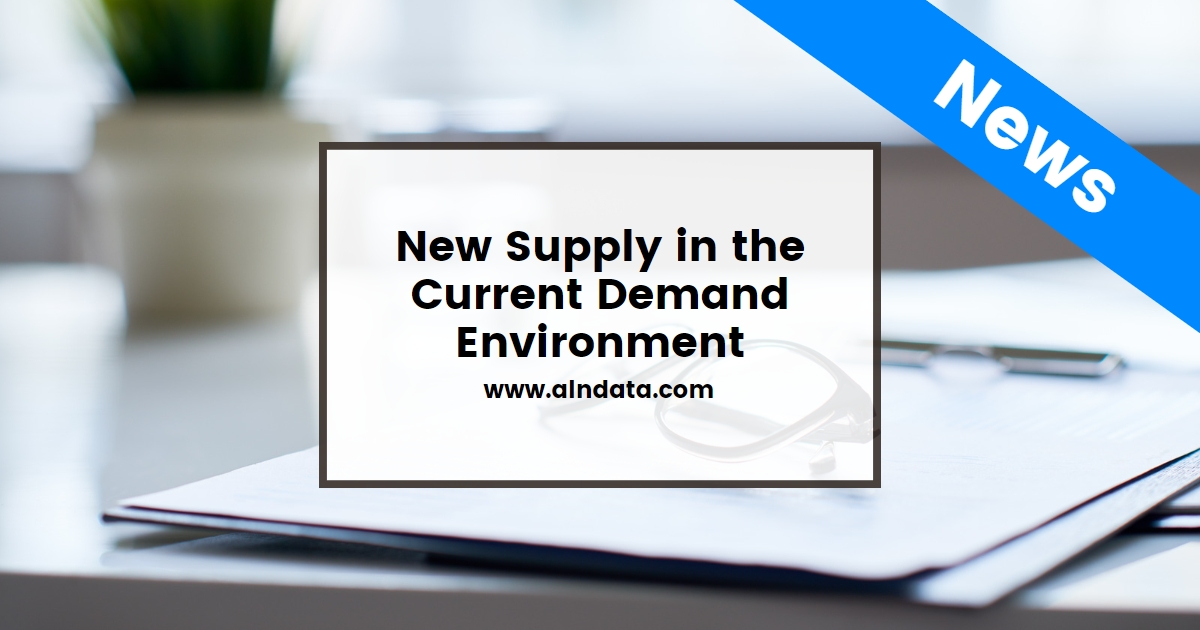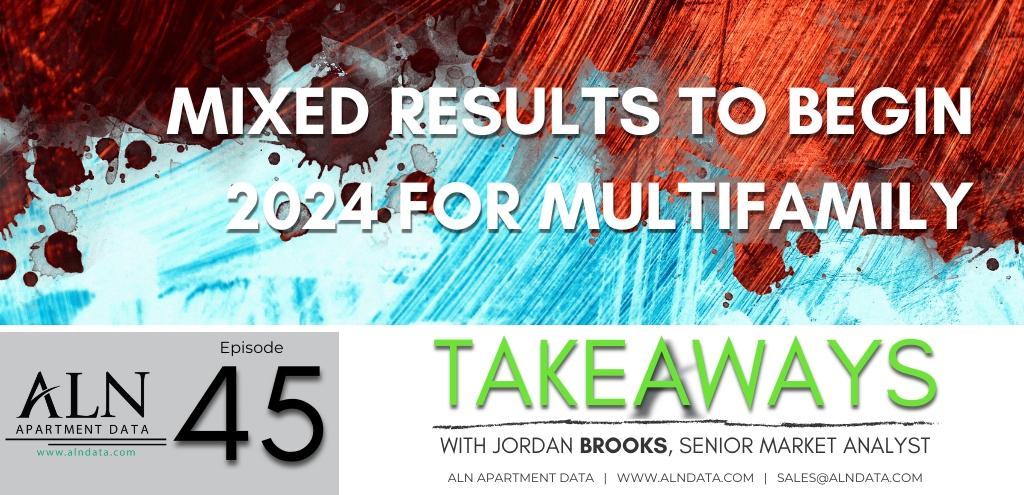Part 1: New Supply in the Current Demand Environment
With the current multifamily demand picture having changed dramatically from 18 months ago, a major component of industry performance in 2023 is going to be the new construction pipeline and how well markets are able to deal with the influx of new units. Over the last few years, construction times have generally increased, and lease-up times have generally lessened. However, the increase in construction duration has not stopped annual deliveries from continuing to climb. Also, 2023 may be the year in which the average lease-up duration reverses course from its multi-year downtrend.
When identifying markets that may struggle more than others, the temptation is to look immediately to the areas with the most active new construction pipelines. This inclination is certainly reasonable, and useful, but it is also important to consider the demand side of the equation as well.
A couple of methodological notes are important here. First, ALN tracks multifamily new construction nationwide and assigns a progress status to each project that is updated as the property moves through the pipeline. Projects categorized as Lease-up or Construction/Lease-up refer to either completed properties that are now leasing up, or properties that have begun leasing while still wrapping up construction. In both cases, these are units that have already hit the market for practical purposes. Projects categorized as Under Construction are properties that have broken ground but not yet begun to lease. With the average construction duration currently at around 18 months nationally, units in this phase of the pipeline are expected to be introduced within two years.
Due to length considerations, this breakdown will be in two parts. This one, the first, will cover units that are in lease-up currently, and the second part will consider upcoming deliveries.
New Units Yet to Stabilize – Primary Markets
In terms of aggregate units in non-stabilized properties that are currently leasing, two markets are in a category of their own. Dallas – Fort Worth, with about 33,000 such units, and New York with approximately 28,000 units lead the way and are generally the most active metros for multifamily deliveries. Houston and Phoenix are the two other markets with at least 20,000 units in properties that have yet to stabilize.
What do these numbers mean in reference to apartment demand? Taking a three-year average for annual absorption in the market and then comparing these non-stabilized units to the average absorption returns a useful estimate. Using this metric, DFW and New York appear to be in very different positions. DFW has roughly 17 months’ worth of average absorption in this phase of the pipeline, while New York has about 35 months’ worth.
Only five of 34 primary markets currently have less than one year’s supply of units in lease-up as using the estimates above. For all five of those, the story is less about strong demand and more about lower construction activity relative to the other large markets. Among the 34 Tier One markets, the average value is roughly 19 months of net absorption accounted for by current non-stabilized stock.
A few markets are well above the 19-month average. Sacramento currently has approximately 4,900 units in new properties that are leasing but have yet to stabilize – equal to five years’ worth of annual net absorption based on the three-year average from 2020 through 2022. Phoenix finds itself almost right under the three-year mark with its just more than 20,000 units in this phase. Three other large markets find themselves with just more than two years’ worth of absorption in lease-up stock: Raleigh – Durham, San Francisco – Oakland, and Seattle.
Takeaways Episode 45
New Units Yet to Stabilize – Secondary and Tertiary Markets
Of course, this dynamic is not limited only to primary markets. One of the features of the last handful of years has been that secondary and tertiary markets in states with robust population growth have generally also taken part in that growth. As such, some of these areas have seen elevated construction activity in recent years.
An area that does not quite fit that bill is Pittsburgh. Less than 2,000 units currently in lease-up is not a huge number, but relative to average annual net absorption of approximately 900 units, those units account for two years’ worth of realized demand. Another market, Greensboro – Winston Salem, has nearly three years of average absorption sitting in lease-up properties. This area is smaller than Pittsburgh but has been more active with recent deliveries thanks to the growth in North Carolina over the last decade.
For the most part, there was not much difference between market-level average annual net absorption derived from the 2020 through 2022 period compared to the 2017 through 2019 period. The last three years have seen arguably unprecedented volatility from the disruption of COVID-19 in 2020 to the soaring recovery of 2021 and to the return to Earth of 2022. The net effect of that three-year period was one that somewhat resembled the previous three-year period – at least with respect to apartment demand.
For a few of the secondary and tertiary markets, this was not the case. The volume of units currently leasing up in these markets looks very different relative to the average absorption from the different periods. For example, in Omaha, about 3,400 units in lease-up accounts for more than five years’ worth of absorption according to the average calculated from 2020 through 2022. But when using the average from 2017 through 2019, that number falls to two years. Similarly, New Orleans. A little more than 1,000 units in non-stabilized properties equates to almost four years’ worth of net absorption using the most recent average, but less than 18 months of absorption according to the 2017 through 2019 average.
Takeaways
It is important to keep in mind that when detailing how many months or years of average absorption is accounted for by current lease-up stock, this metric is measuring to 100% of units absorbed. But, of course, lease-up properties do not need to reach 100% occupancy to maintain market-level average occupancy.
Average Class A net absorption could have been used in place of a market-level average, and this might be an improvement in the metric in certain markets. Most new properties enter in the Class A space, and Class A demand was more resilient in 2022 than the other price classes. On the other hand, Class A resilience is not guaranteed to be duplicated this year, particularly in specific markets where there have already been major layoffs in the tech and finance sectors. Also, in larger markets not all new supply comes in as a Class A property – usually due to being in a more outlying submarket.
Finally, this has only been a look at units already leasing. The second installment for this topic will be a look at upcoming supply that has already broken ground though not yet leasing. Many of the markets with a lot of units currently in lease-up also have a high volume of upcoming deliveries. The areas with a high number of units in both categories combined with specific demand concerns are those that appear most at risk for a rocky 2023.
Disclaimer: All content and information within this article is for informational purposes only. ALN Apartment Data makes no representation as to the accuracy or completeness of any information in this or any other article posted on this site or found by following any link on this site. The owner will not be held liable for any losses, injuries, or damages from the display or use of this information. All content and information in this article may be shared provided a link to the article or website is included in the shared content.


